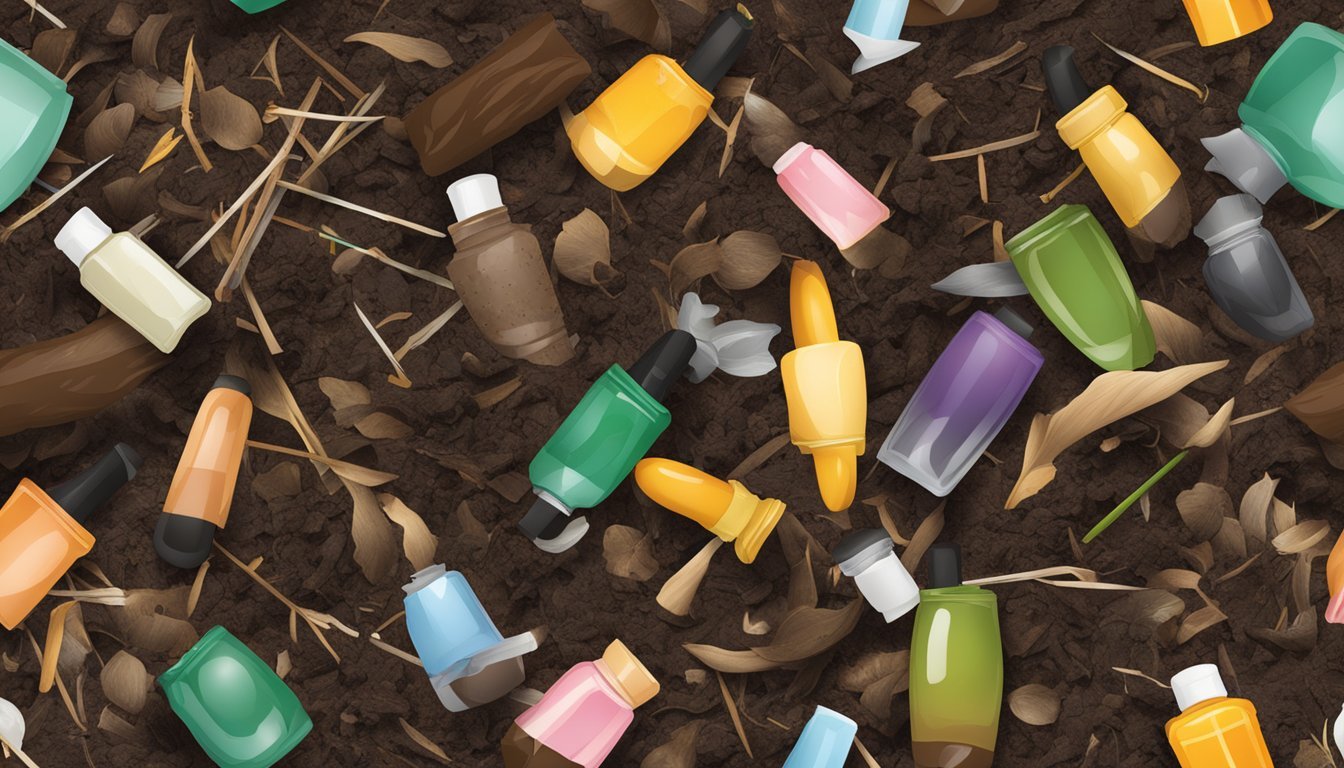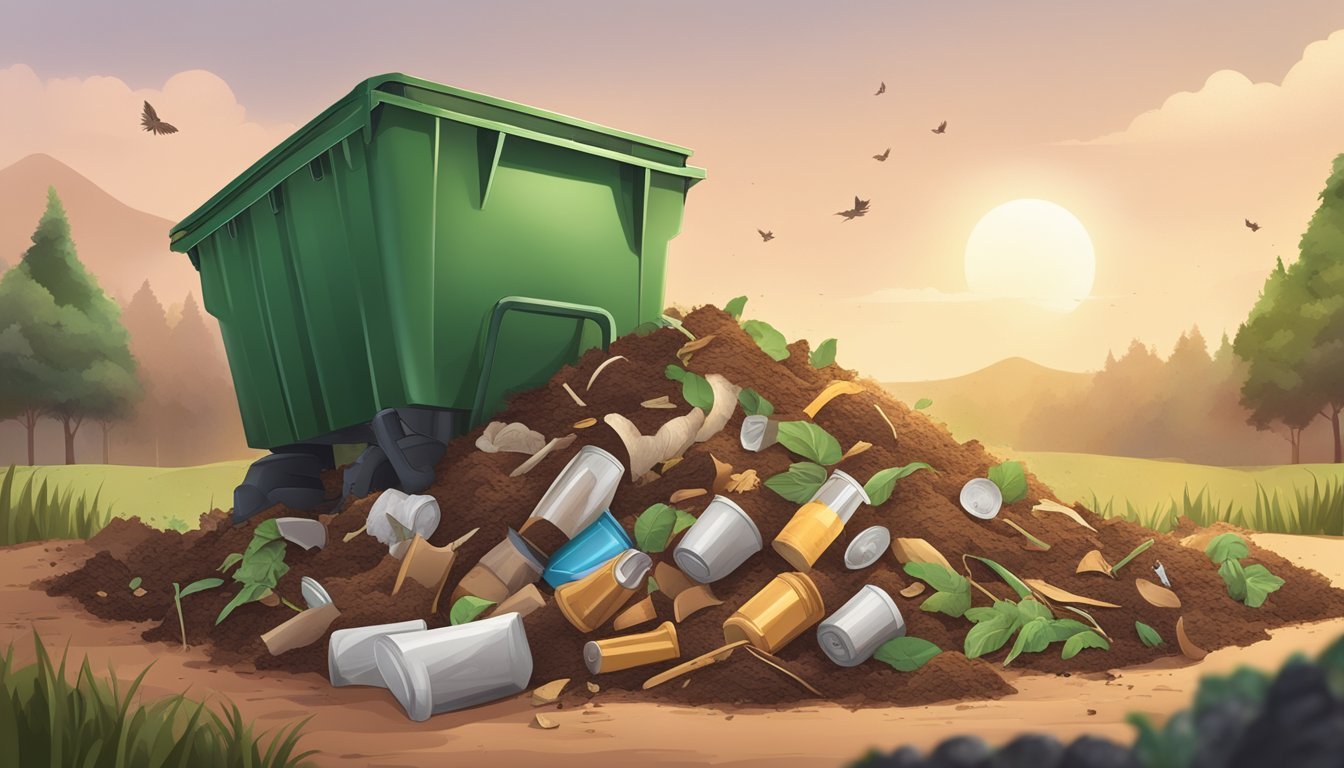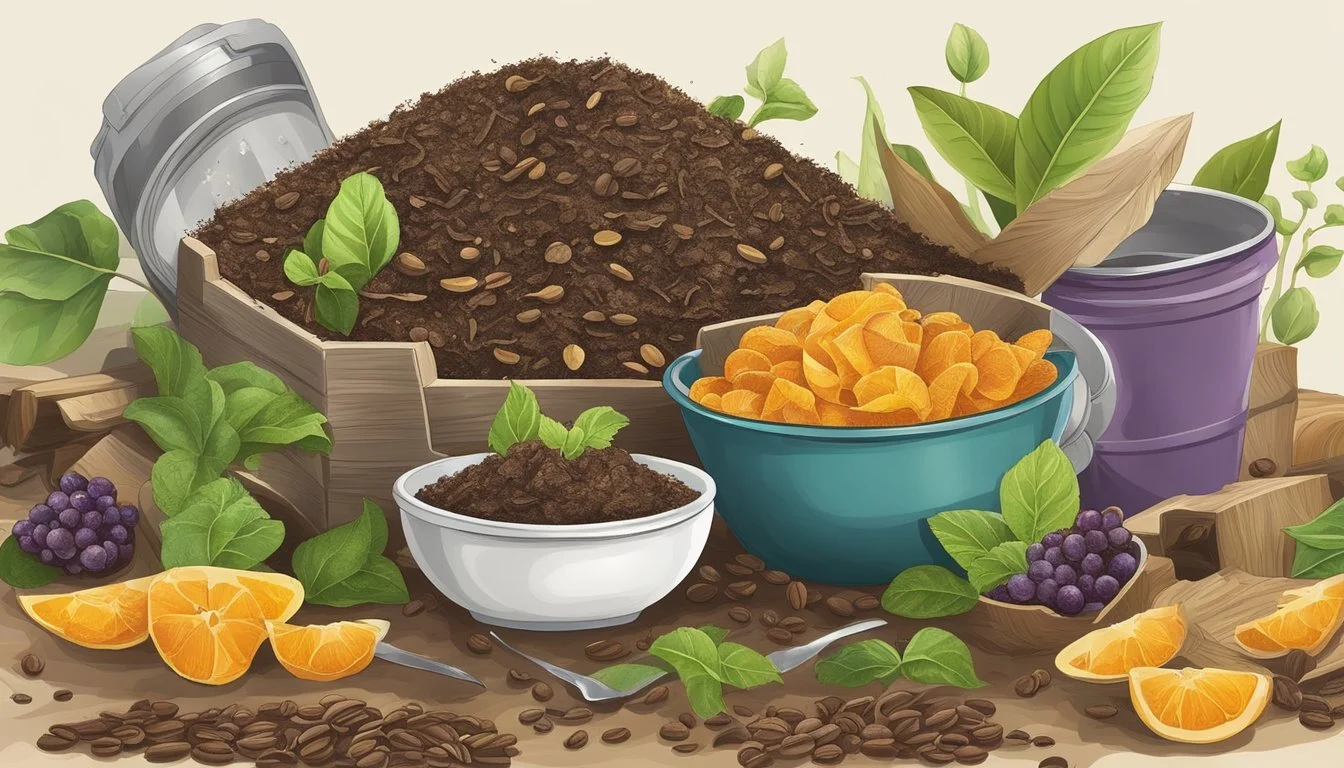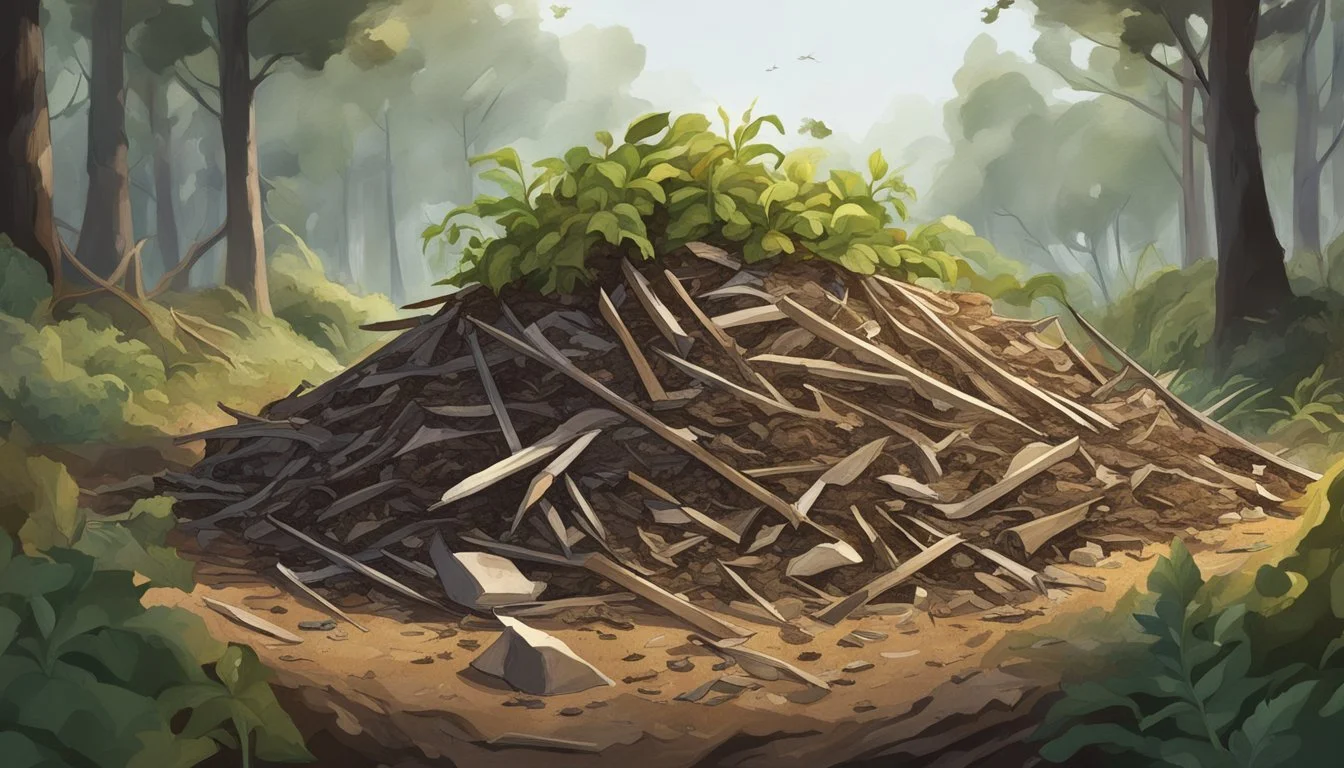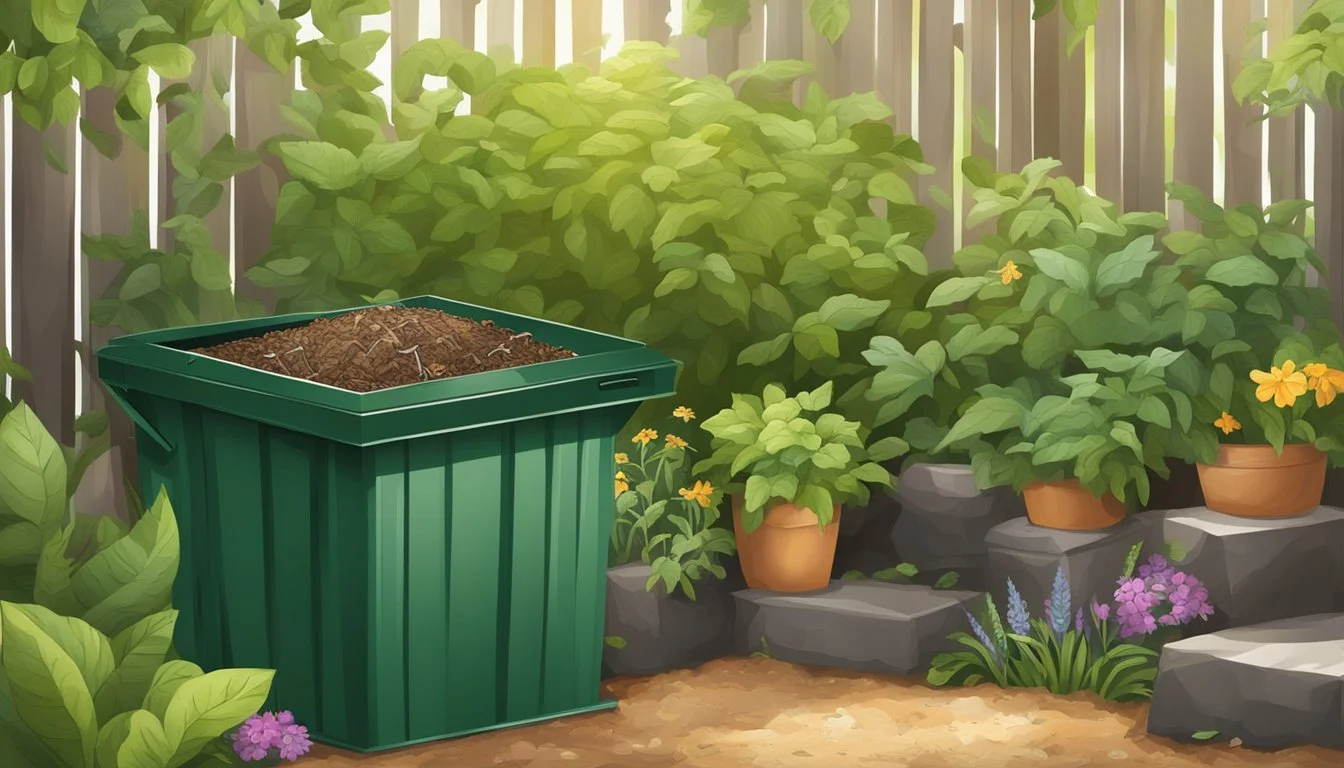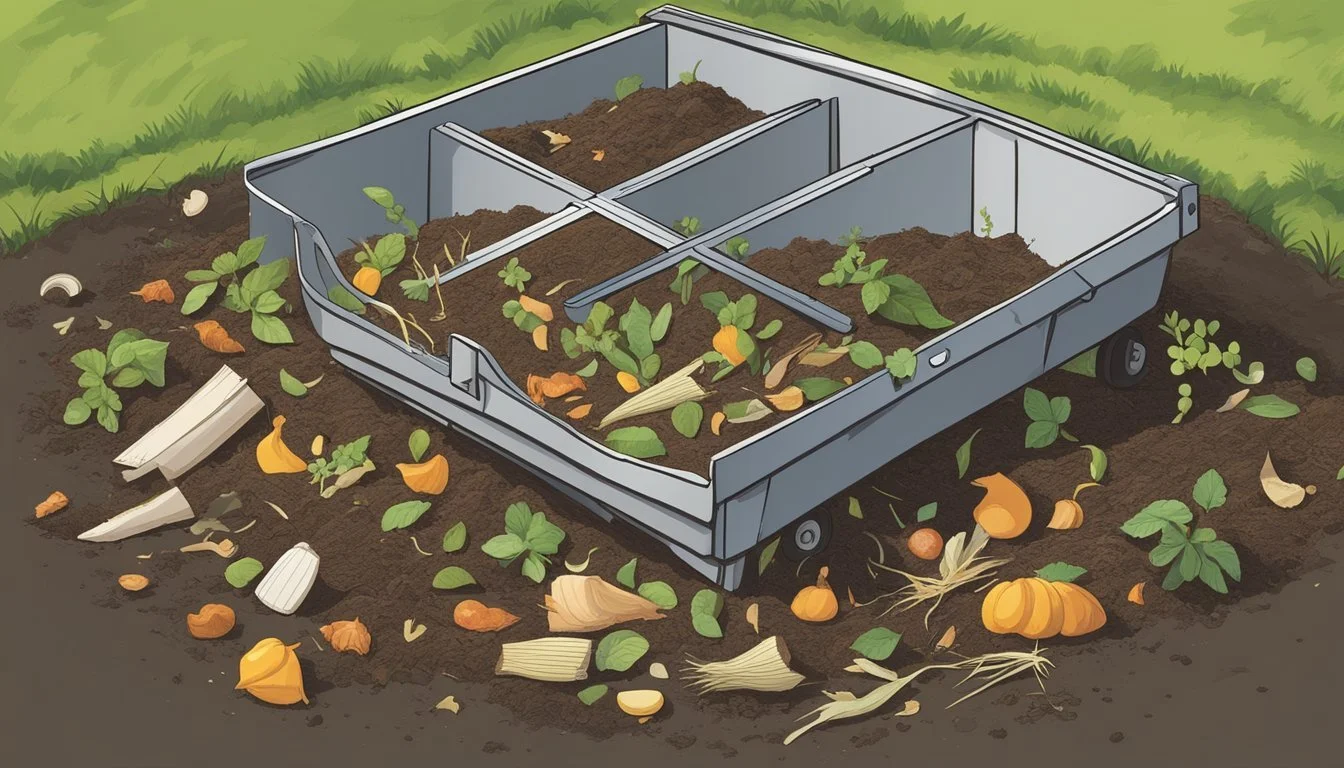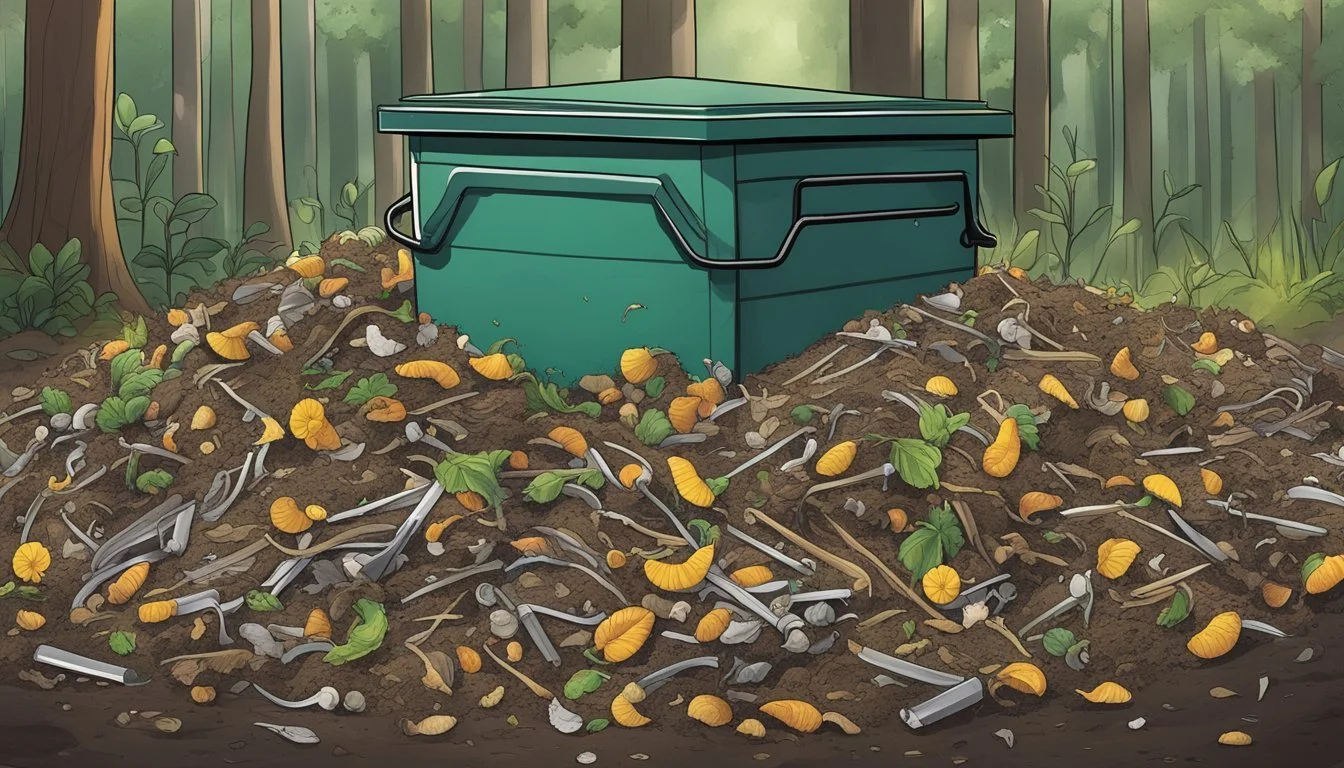Can You Compost Nail Clippings?
Unveiling the Truth About Biodegradable Waste
Nail clippings are a common byproduct of personal grooming that often end up in the trash. However, they can play a beneficial role in a composting system. Composting, the process of breaking down organic matter to create nutrient-rich soil, can incorporate a variety of materials. Nail clippings, like human hair, contain keratin, a protein that decomposes naturally. When added to a compost pile, nail clippings contribute to the creation of a balanced compost that can help enrich the soil.
When considering what to add to a compost pile, a general rule of thumb is that if it was once a living organism, it can be composted. Nail clippings fit this criterion and are indeed compostable. As they break down, they release nutrients such as nitrogen and phosphorous, which are essential for plant growth. Including them in compost bins not only diverts waste from landfills but also enhances the compost's value for gardening purposes.
It is important to recognize that while nail clippings are compostable, they should be added in moderation. They decompose at a slower rate compared to many kitchen scraps and green waste. For optimal composting results, they should be mixed with a variety of other organic materials to ensure a balanced composition that encourages microbial activity and an efficient decomposition process.
Understanding Composting Basics
Composting is a natural process that transforms organic materials into a nutrient-dense soil amendment. Through this, one recycles kitchen and garden waste into compost that enriches the soil, promotes plant growth, and sustains the ecosystem.
The Composting Process
To begin with, composting involves the breakdown of organic matter by microorganisms such as bacteria and fungi. These microorganisms require both oxygen and moisture to thrive. The composting process is categorized into two phases:
Active Phase: Microorganisms rapidly consume easy-to-digest materials, generating heat in the process.
Curing Phase: The compost pile cools down as the organisms slowly process tougher materials, creating a finished product that is rich in nutrients vital for healthy soil.
It's a cycle that manages to turn everyday waste into something valuable for the garden.
Components of a Healthy Compost Pile
The key to a thriving compost pile lies in a balanced mix of carbon and nitrogen-rich materials:
Carbon-rich materials: Also known as 'browns', these include substances like dried leaves, branches, and paper. They provide the microorganisms with energy.
Nitrogen-rich materials: Referred to as 'greens', they consist of items such as vegetable scraps, fruit waste, and grass clippings. These materials supply the protein that microorganisms need to grow and multiply.
The ideal ratio for a compost pile is roughly 30:1, carbon to nitrogen. Regularly turning the pile introduces oxygen and speeds up the composting process, leading to a successful decomposition.
By carefully managing these elements, anyone can convert their organic waste into compost, facilitating a closed-loop system that improves soil texture and fertility.
Items Suited for Composting
When creating a compost pile, it’s essential to know which items are suitable. All organic waste can be converted into valuable compost, but the right balance is vital for efficient decomposition.
Biodegradable Materials
Composting thrives on organic materials that break down over time. The list of biodegradable items suitable for composting includes:
Leaves: Rich in minerals, they break down to create a healthy compost structure.
Fruit and Produce: All parts, including peels and cores, are compostable.
Eggshells: Crushed shells add calcium but must be well-rinsed.
Coffee Grounds and Tea Leaves: They contribute nitrogen and improve soil texture.
Grains: Leftover bread, rice, and flour can be added sparingly to avoid pests.
Herbs and Spices: These should be used in moderation to not overwhelm.
Items like cotton balls (unbleached), wine corks, and sawdust are also compostable, provided they have not been treated with chemicals.
Balance of Greens and Browns
A successful compost requires a mixture of 'greens' and 'browns':
Greens:
Provide nitrogen
Examples: vegetable scraps, fruit waste, coffee grounds, tea leaves, and garden waste.
Browns:
Offer carbon
Examples: dry leaves, branches, sawdust, and cardboard.
Table: Ideal Composting Materials
Greens (Nitrogen-rich) Browns (Carbon-rich) Vegetable scraps Dry leaves Fruit waste Cardboard Coffee grounds Twigs and branches Tea leaves Paper Garden waste Straw Fresh grass clippings Sawdust
For an efficient composting process, maintain a green to brown ratio of approximately 1:3 to prevent odors and promote faster decomposition.
Composting Nail Clippings
In the realm of composting, adding nail clippings is a practice akin to composting hair, leveraging the natural keratin content for soil enrichment without introducing toxins to the compost ecosystem.
Are Nail Clippings Compostable?
Nail clippings are indeed compostable. Both fingernail and toenail clippings are considered organic waste and can be decomposed by microorganisms within a compost pile. These clippings are biodegradable, breaking down over time without leaving harmful residues.
Keratin in Composting
The primary component of nail clippings is keratin, a strong, fibrous protein also found in hair. Keratin-rich waste is a valuable compost ingredient because it breaks down to release nitrogen, an essential nutrient that promotes healthy plant growth. To aid in the decomposition process, ensure that the compost pile has a balanced mix of green (nitrogen-rich) and brown (carbon-rich) materials.
Safety and Hygiene Considerations
Hygiene: Nail clippings should be free from fungal infections or nail polish to prevent potential spread of toxic substances or pathogens into the compost and ultimately, the soil.
Biodegradable: Ensure that clippings are buried well within the compost to avoid attracting pests.
Organic Matter: Treating nail clippings as organic matter simplifies waste management and enriches the soil, making it a sustainable practice.
By understanding these aspects, composting enthusiasts can safely integrate nail clippings into their composting routines, contributing to a nutrient-rich soil.
Composting Challenges and Solutions
Composting is an effective way to reduce waste and enrich soil, yet it comes with its own set of challenges, particularly when adding unconventional items like nail clippings. Careful consideration is required to avoid introducing non-biodegradable items and to manage pests and odors effectively.
Dealing with Non-Biodegradable Items
In a compost bin, nail clippings are generally considered biodegradable and beneficial. However, clippings with nail polish or from fake, acrylic, or false nails should be excluded, as they contain plastics and chemicals that are not eco-friendly and can persist in the environment, contributing to landfill issues. Composters should ensure that any nail clippings added to compost do not contain these items.
Acceptable: Plain nail clippings
Not Acceptable: Nail clippings with polish, fake nails
Pests and Odor Management
Proper composting techniques are crucial for preventing pests and odor, which are important environmental considerations to maintain a healthy compost pile.
Aeration: Ensure the pile is turned regularly to allow oxygen in, preventing anaerobic conditions which can cause foul odors.
Balance: Maintain a good balance between green and brown materials to discourage pests. Too much of one type can attract unwanted creatures or produce a pungent smell.
Cover: Always cover new additions with a layer of brown materials like leaves or straw.
Pest Deterrents:
Keep the pile moist but not wet.
Use a compost bin with a lid to deter pests.
By addressing non-biodegradable items and implementing odor and pest management strategies, composters can successfully integrate nail clippings into their compost without causing harm to the environment.
Optimizing Your Composting Technique
Effective composting is a balanced blend of elements that, when optimized, transforms organic waste, such as nail clippings, into nutrient-rich soil. Two critical factors in this transformation are maintaining proper temperature and aeration, and ensuring appropriate moisture and particle size.
The Role of Temperature and Aeration
To optimize a compost bin, one must maintain a temperature that encourages bacterial activity but does not kill beneficial microorganisms. Ideally, the internal temperature should be between 140°F and 160°F. Additionally, proper aeration, or airflow, is essential. It aids decomposition by supplying oxygen to bacteria and other microorganisms responsible for breaking down organic waste. This can be achieved by turning the compost regularly, which to prevent anaerobic conditions and to maintain a structure that is conducive to airflow.
Ideal Temperature Range:
140°F to 160°F
Aeration Methods:
Turning the compost
Using a bin with air vents
The Importance of Moisture and Particle Size
Moisture is critical, as microorganisms in the compost pile need water to survive. The compost should be as damp as a wrung-out sponge. Excessive moisture can lead to a lack of oxygen, creating anaerobic conditions and unpleasant odors. Conversely, too little moisture can slow down or halt the decomposition process. Furthermore, the particle size of composting materials affects air and moisture distribution. Smaller particles decompose more quickly due to their increased surface area, but they may also clump and reduce airflow within the compost pile. To maintain balance, mix small particles, like nail clippings, with larger ones to create a varied structure.
Moisture-Level Guidance:
Consistency of a wrung-out sponge
Particle Size Recommendations:
A mixture of small and large particles for balanced structure and airflow
Advanced Composting Topics
Incorporating nail clippings into compost is a unique way to contribute to a sustainable garden ecosystem and improve plant growth, leveraging the natural cycle of decay and nutrient recycling.
Creating a Sustainable Garden Ecosystem
A sustainable garden thrives by mimicking natural ecological processes, creating a balanced environment. Nail clippings, being rich in keratin, are an excellent addition to a compost heap as they decompose and return nutrients like nitrogen and phosphorus back to the soil. This practice not only reduces waste but also encourages a circular nutrient flow within the garden, reinforcing its eco-friendly ethos.
What Should Go in Your Compost Bin:
Green Waste: Vegetable scraps, fruit peels, grass clippings
Brown Waste: Dry leaves, cardboard, paper
Keratin-Rich Waste: Human nail clippings, hair from brushes
Using Compost to Improve Plant Growth
Enriched soil is the foundation of healthy plant growth. Compost acts as a slow-release fertilizer, providing plants with essential nutrients over time. When nail clippings decompose within a compost pile, they contribute to a nutrient-rich amendment that can enhance soil structure, increase aeration, and aid in water retention. This results in robust plant growth and increased productivity in your garden.
Benefits of Compost to Soil and Plants:
Nutrient Supply: Gradual release of nitrogen, phosphorus, and other micronutrients
Soil Structure Improvement: Enhanced aeration, drainage, and root penetration
Water Retention: Better moisture holding capacity, beneficial for plants, especially in dry conditions
A sustainable garden and the promotion of plant growth are both achievable through thoughtful composting practices, epitomizing eco-friendly gardening principles.
Environmental Impact
Composting nail clippings offers a straightforward approach to ecological waste reduction, fostering a more sustainable and organic ecosystem.
Reducing Waste with Effective Composting
Incorporating nail clippings into a compost bin is a simple yet effective method of reducing waste. Nail clippings decompose naturally, transforming into nutrients that enrich the compost. By diverting these biodegradable items from landfills, individuals lessen their environmental footprint. Landfills are not only prone to slow decay processes, but they can also become sources of heavy metals and other contaminants leaching into the ground. In comparison, composting is a more eco-friendly process that not only mitigates the waste problem but also creates a valuable, organic product for a sustainable garden.
Contributing to a Greener Planet
The practice of composting nail clippings contributes to a greener planet by converting a small part of household waste into a benefit for the environment. As the clippings break down within a compost heap, they release nitrates, a type of slow-release nutrient, which are then available to support plant growth. This process aids in building healthy soil ecosystems, leading to a more robust and eco-friendly garden. Furthermore, by decreasing the amount of organic waste sent to landfills, composting helps reduce the production of methane, a potent greenhouse gas, thus supporting overall efforts toward an eco-friendly, sustainable environment.
Miscellaneous Compostable Items
In a well-maintained compost pile, an array of everyday items from your household can be converted into nutrient-rich soil additives. Not just kitchen scraps, but several lesser-known household waste items are compostable.
Household Items You Can Compost
Many everyday items that end up in the trash have the potential to be composted. Below is a selection of such items:
Paper Products: Uncoated napkins, paper towels, and newspaper can be added to your compost. They should be shredded to speed up decomposition.
Cardboard: Clean cardboard, free of any plastic coating or ink, is compostable.
Natural Textiles: Cotton, wool, and silk scraps, provided they are not mixed with synthetic materials.
Wood and Bamboo: Items like toothpicks and bamboo skewers can be composted if they haven't been treated with chemicals.
Yard Waste: Grass clippings, twigs, bark, hay, straw, and leaves are excellent for compost as they add necessary carbon and nitrogen.
Surprising Compost Ingredients
Some unusual items that could be good for your compost bin:
Beverages: Small amounts of wine and beer can be poured into the compost heap to help microorganisms grow.
Feathers: These are rich in nitrogen and can be composted.
Rope: Natural fiber ropes like those made from hemp or jute.
Cooking Leftovers: This includes leftover brine from pickles or expired yeast. Salt should be minimal as it can harm the compost balance.
Tea Bags: These are compostable, but make sure to remove any staples or non-compostable parts.
Bathroom Waste: Toilet paper rolls (cardboard tubes) and toilet paper itself, as long as they are not contaminated with chemicals or cleaning agents.
Adding these items to a compost pile can contribute to a more sustainable household waste management system and benefit garden soil.
Conclusion
Composting nail clippings is a viable and eco-friendly option for waste reduction. As a biodegradable substance, both fingernail and toenail clippings can be added to a compost pile.
Advantages of composting nail clippings:
Waste Reduction: Composting nail clippings helps in minimizing landfill waste.
Nutrient-Rich Soil: Decomposed clippings add nutrients to the compost, enriching the soil.
Considerations when composting nail clippings:
Potential Contamination: If the nails have been painted or treated with acrylic, it's recommended to exclude them from compost to avoid introducing chemicals.
Composting Process: Natural nail clippings break down effectively when mixed into a well-maintained compost pile.
Gardeners and environmental enthusiasts should consider the practice of composting their nail clippings as a part of their sustainable lifestyle habits. They can take solace in knowing that this small act contributes to a larger cycle of natural composting processes, helping to cultivate healthier gardens and ecosystems.

